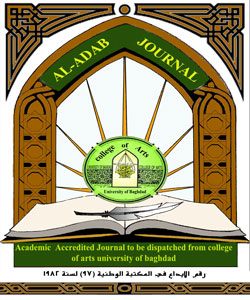Abstract
The Algerian writer "Taher Watar", in his novels, used to link the fictional text to the reference, using the technique of intertextuality. It shows the dialogue, interdependence and disharmony of cultures, thus holding as many texts as possible on their diversity and re-resurrecting them in the appropriate place, which fertilizes the current text and makes it more powerful and beautiful. But in his latest novel, "The Pure Guardian Returns to His Rightful Place", he employed him differently, as he relied on abstract narratives based on time, place and personnalities that are difficult to capture or identify; It imposed an imaginary space that we did not have in his earlier writings, and the way of linking the parts of the imagination. What is the intertextuality as a mechanism for linking the imagined and the reference? And how is the novelist's imagination stuck by intertextuality?
Keywords
imagination
Intertextuality
lingering
Overlapping
Reference
Abstract
عوّدنا الكاتب الجزائري "الطاهر وطار" في أعماله الروائية على وصل النص المتخيّل الروائي بالمرجع مستعملا في ذلك تقنية التناص. فيظهر تحاور الثقافات وترابطها وتنافرها، وهو بذلك يعالق ما أمكن من النصوص على تباينها ويعيد بعثها من جديد في المقام المناسب ممّا يخصّب النص الراهن ويجعله أكثر قوّة وجمالا، ولكن في روايته الأخيرة «الولي الطاهر يعود إلى مكانه الزكي» وظفّه بشكل مغاير؛ ذلك أنّه اعتمد على السرد التجريدي الذي يقوم على زمان ومكان وشخصيات يصعب الإمساك بها أو تحديديها؛ إذ أنّه فرض فضاء متخيّلا لم نعهده في كتاباته السابقة، وكان التناص سبيله في الربط بين أجزاء المتخيّل. فما هو التناص كآلية للربط بين المتخيّل والمرجع؟ وكيف عالق المتخيّل الروائي المرجع عن طريق التناص؟
Keywords
التناص، المتخيّل، المرجع، معالقة، تداخل
